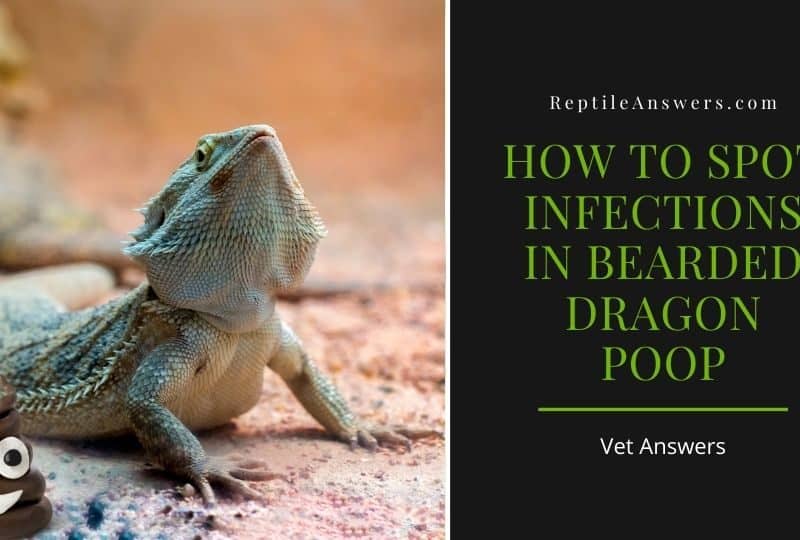If you own a tortoise, it’s natural to consider getting another reptile to keep it company. After all, a second reptile is sure to thrive alongside your slow and peaceful tortoise. Reptiles are very low-maintenance pets, so another shouldn’t hurt, or so you’d think. In truth, letting reptiles cohabit is rarely recommended.
Tortoises can live with other reptiles, but they need different humidity, basking temperatures, and ambient temperatures. Tortoises can’t be kept near pools of water, which rules out turtles, chameleons, and some snakes. Depending on the species, tortoises may pair favorably with a house gecko or bearded dragon.
A bearded dragon will pair best with desert tortoises or the Russian tortoise. Meanwhile, Indian star tortoises handle the conditions that a house gecko enjoys. However, most other species aren’t a good match. Most enjoy a solitary lifestyle as reptiles aren’t sociable creatures.

What Reptiles Can Live With A Tortoise?
There are few reptiles that can share a habitat with a tortoise because each species has specific needs in terms of:
Humidity, Ambient temperature, Basking temperature, Diet, and Hygiene
If you want to add a second reptile to your tortoise’s enclosure, lizards are the safest option. A common example is a bearded dragon since they share habitat requirements with the Russian tortoise. They’re also large and agile enough to stay away from a tortoise while being extremely docile.
Even still, fights can break out, and injuries can occur. Because of this, if you want to take care of a different reptile, it’s best to keep them in separate enclosures. They can visit each other under your supervision.
Can Turtles And Tortoises Live Together?
It is not recommended to mix turtles and tortoises. It may seem like a good idea, as they’re very close in terms of biology. However, there are risks involved.
Fights
These two species are prone to fighting. Tortoises are more aggressive and territorial than turtles. Turtles can become injured, so both animals are better left in isolation.
Water
With aquatic tortoises, a difference in habitat will make things difficult. You’ll need to ensure that your turtle gets access to water for swimming while ensuring that your tortoise doesn’t drown in the water.
Disease
There’s a chance of spreading diseases between animals. Their similar biology means they can share illnesses. ,
Habitat
Ensuring that the enclosure is suitable for both animals becomes even trickier. Turtles and tortoises need different humidity levels and temperatures. Trying to make them share could lead to imbalances that make them sick.
Turtles and tortoises can technically live together. It’s not impossible. It’s just hard to ensure that both animals stay safe. With enough care, attention, skill, and experience, it is possible.
Because turtles tend to be less aggressive and territorial, you might get a better chance of a turtle-tortoise pair getting along than two tortoises. Nonetheless, these two should still be housed with the utmost care.
Can Bearded Dragons Live With Tortoises?
Bearded dragons can safely live with tortoises. In fact, of all reptiles, bearded dragons are perhaps the most likely to bond calmly with tortoises.
Of course, there’s still work to be done to ensure that both animals stay safe. When compared to other reptile pairings, however, there is a good chance of success.
To house these two animals together, space becomes extremely important. Additionally, ensure that your tortoise has the same habitat requirements as bearded dragons. A good and common choice is the Russian or Horsefield tortoise.
Can Lizards Live With Tortoises?
Lizards can live with tortoises. Some owners have successfully raised them in the same habitat. Some zoos mix lizards and tortoise species. However, these establishments have experts on hand and only mix species that cohabitate naturally in the wild.
Risks Of Keeping Lizards With Tortoises
When mixing tortoises and lizards, you have to consider three factors:
The spread of diseaseDifferences in environmentAggression
Despite the slow and peaceful nature of both animals, lizards and tortoises can physically hurt each other. Lizards of a large enough size can bite through tortoise flesh, while tortoises have strong enough jaws that can bite lizards.
How to Keep Lizards With Tortoises
Nonetheless, you can avoid these ill tempers by having a large enclosure so that one animal doesn’t feel threatened by the other. You should also provide hiding spots for each to lessen stress and aggression.
Be sure that both animals cannot reach the food of the other. This will reduce territorial behavior and keep fights from breaking out.
You will need to carefully balance the temperature and humidity levels to suit both animals. Some are more adaptable than others, but forcing them too far out of their comfort zone can result in stress. This will raise the chances of fighting and illness.
As such, it’s still recommended to keep both species in their own tanks. This will ensure that they thrive.
Can A Tortoise And Chameleon Live Together?
At first, it may seem like chameleons and tortoises can share a habitat. These two animals have very different needs, though, and shouldn’t be kept together.
Different tortoises will have different requirements for temperature and humidity. However, you’ll be hard-pressed to find a common tortoise species that can match the habitat requirements of a chameleon.
Chameleons require humidity levels of 65%-85%. They also require basking temperatures of 85-95 degrees Fahrenheit. The conditions must be exact and well-maintained. The only common tortoise species that can live in these exact conditions is the Indian star.
Even then, these two animals require different ambient temperatures. Chameleons can tolerate temperatures of up to 80 Fahrenheit, but Indian stars require at least 90 Fahrenheit.
Can Geckos And Tortoises Live Together?
Geckos and tortoises cannot live together. They may appear to have the same habitat requirements. However, this is not the case. Neither of the two common pet gecko species (the house gecko and leopard gecko) can live in the same conditions as pet tortoise species.
The closest match would be the house gecko and the Indian star tortoise. They have a shared range in terms of humidity. However, a tank shared by these two will be entirely too hot for the house gecko.
House geckos need a space in their enclosures that goes below 80 degrees Fahrenheit. Indian star tortoises need ambient temperatures of at least 90 degrees Fahrenheit. This is too much of a difference to compromise.
Can Snakes And Tortoises Live Together?
It’s not recommended to mix any animal with a snake, especially a venomous snake or large constrictor. Snakes are best kept alone. Even enclosures with multiple snakes of identical species are fed separately. Snakes are highly aggressive and territorial. When fed together, the most dominant snake will eat all of the food, instigating fights.
Will Snakes Eat Tortoises?
Snakes won’t eat your tortoise. Tortoises are often too large for snakes, and they can’t digest tortoise shells, either. However, this doesn’t remove the possibility of your snake trying to eat your tortoise.
When Can Snakes And Tortoises Live Together?
Snakes and tortoises are seldom a good mix. Of course, there are exceptions, with some snakes being known to live peacefully with tortoises. Likewise, certain species have matching habitat requirements, meaning they can share the same enclosure.
Even still, there’s always the risk of them fighting. Breaking up a fight between snakes and tortoises can be hard for people unused to handling both, especially snakes.
Keeping the two reptiles together demands a high degree of care and attention. Even then, the risks are often too great. If you want to raise both species, it is better to keep them in separate enclosures.
Can Tortoises Live Together?
Not all tortoises can live together, even if they are of identical species. For example, males often fight each other, and male-female pairs often breed to the point of injury. Territorial behavior can get messy, and so can space restrictions. Tortoises of different sizes and ages may be at odds.
Nonetheless, the risk of housing multiple tortoises together is less than with other reptiles. Some pairs get along well enough. You will need to consider which species get along best and adjust the tank to suit them both.
Keep in mind that there will always be a chance of fights breaking out. There’s also a high risk of disease transmission. Depending on which tortoises you buy, some require different diets and habitats than others. So long as you supervise the tortoises and accommodate both, they can get along.
What Tortoise Species Can You Keep Together?
Of the common pet species, you safely keep the Russian and Hermann’s tortoise together. That is, as long as you take the recommended precautions. You will need a habitat with 40%-45% humidity, with a basking temperature of 90-95 degrees Fahrenheit.
Another combination is the red-foot and Indian star tortoise. Keep humidity levels at 70%-80% and a basking temperature of 80-85 degrees Fahrenheit. You will need to compromise with the ambient temperature and keep it between 80-85 degrees Fahrenheit.

Why Are Tortoises Better Kept Alone?
In an enclosure with multiple animals, it’s wise to choose a single species. The risks involved with housing multiple reptile species can be too great. That’s especially true for owners who lack prior experience and resources. Here are risks associated with housing different reptile species together:
Aggression
Reptiles are territorial and will be aggressive towards other creatures they see on their turf. Reptiles tend to be fine with other animals, but this hostility can extend to other reptiles.
Of course, some species are less aggressive than others. For example, turtles are known to live well alongside other turtles. Lizards, with the right set-up, are known to live well with each other, too. However, it’s still easier to house these animals in solitary tanks.
Diseases
It’s not recommended to house different species together, much less different types of reptiles. Even housing multiple tortoises of an identical species can be tricky. That’s mainly because of the high risk of transmitting diseases.
Animals that aren’t usually found together in the wild may infect one another. Viruses and diseases can develop very differently when they are found in different locations. A small cold to one species can be lethal to another due to a lack of immunity.
The best way to avoid this is by quarantining animals before adding them to the enclosure. Even this won’t remove all chances of infection. Diseases can lie dormant in the body for long periods of time, sometimes for an animal’s entire life. When an animal is stressed or malnourished, these diseases crop up and infect other animals.
Tortoises Are Solitary
Tortoises are solitary creatures. They are non-egregious, meaning that they function best when they don’t have other animals or species around them.
That isn’t to say tortoises rebel against any contact. They can learn to enjoy the company of their owners, and they’re known to interact and play with other tortoises in the wild. However, this is for short bursts. It’s only when tortoises come across each other while exploring the outer rims of their private territory.
As always, tortoises prefer neighbors, not roommates. That can make it difficult to house tortoises with another reptile. Instead, it’s best to let them sparingly interact outside of their tanks with your supervision.
The solitary nature of reptiles is hardwired. According to Advances in the Study of Behavior, reptiles may be solitary due to a lack of cognitive ability. Another theory states it’s because they cannot defend against infectious diseases from other animals. To go against their solitary nature requires a lot of work.
Reptiles Are Territorial
According to the American Zoologist, territorial species that live in crowded conditions will be more aggressive. This will result in a hierarchical structure being established through fighting and injuries.
For this reason, it’s important to give reptiles enough space for each animal to carve out their own hiding spots. Otherwise, they may claim these limited spaces through violence.
Different Habitats
It’s also unwise to house different reptiles together due to their range of habitat needs. There are times when lizards and tortoises are compatible. For example, some desert tortoises would do well with the bearded dragon in an arid and dry habitat.
However, even closely related species can have wildly varying requirements. For example, aquatic turtles will require a pool of water, while tortoises can be at risk of drowning.
Reptiles Are Carnivorous
Perhaps the most concerning risk is that many reptile species have a carnivorous nature. A few exceptions include some tortoises, the iguana, and a limited number of lizard species.
When housing a carnivorous reptile, there’s always the chance of a nip turning into an aggressive bite. Even a docile carnivore may decide its tank mate is food. The odds become far greater when a reptile is larger than its tank mate.
Some reptiles can live together peacefully. However, keeping them separate is usually better for your time, energy, and wallet.

How To Safely Mix Reptiles Together
It is always dangerous to mix two reptiles. However, there are ways to minimize the risks:
Keep Sizes Similar
Size is often a factor in aggression. Bigger animals are more likely to bully smaller ones. If both animals are closer in size, there’s less of a chance that one will harm the other.
Keep An Eye On Gender Ratios
Have no more than one male per species in an enclosure. That is unless you have enough females to even them out.
The optimal ratio will vary from one species to another. However, a good rule of thumb is 3 females to 1 male. An all-female enclosure is also a good alternative.
Quarantine Before Adding
Quarantine all animals before mixing them with other species. That’s true even with the same species.
Vets recommend quarantining animals for at least a month, but you can extend this up to 6 months. Quarantining means that the new animal cannot have contact with other animals. You’ll need to set up another tank.
Be Prepared To Isolate An Animal
Aggression will always be a risk in an enclosure with multiple species. Plus, there will be some animals that cannot get along with others. When housing multiple species, you’ll need an extra enclosure, just in case you need to separate an animal or isolate one due to injuries.



